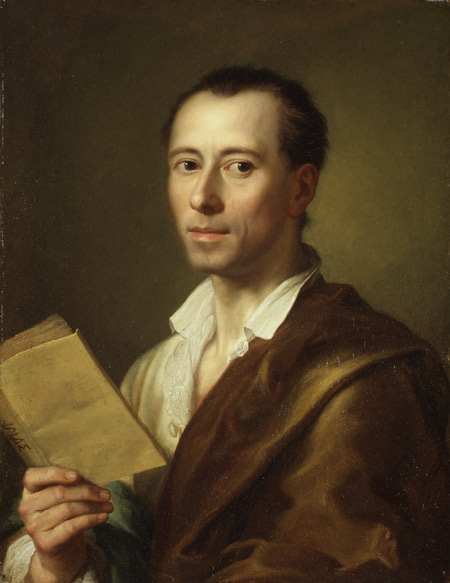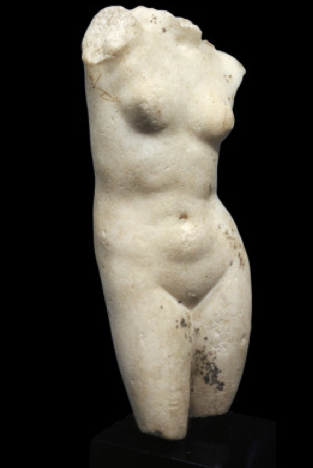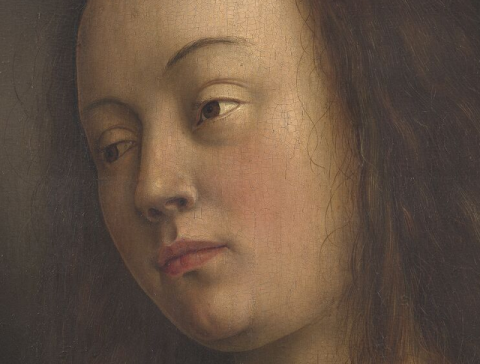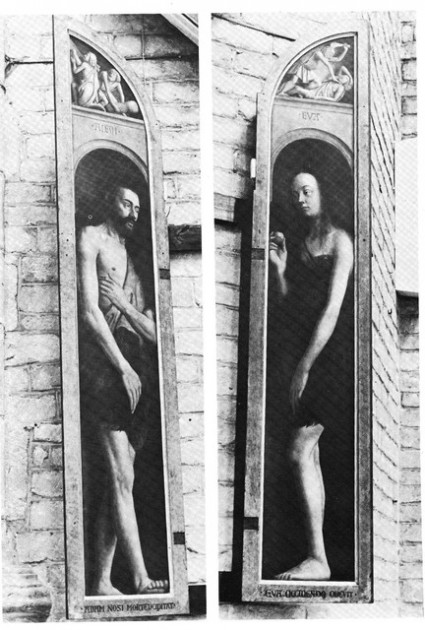Friday, November 23rd, 2012
Eckhout’s Eight Brazilian Portraits

Modified (slightly cropped) depictions of Eckhout's series of eight figures (c. 1641). Top row (L-R): "Tapuya Man," "African Man," "Tupi Man," "Mulatto Man." Bottom row (L-R): "Tapuya Woman," "African Woman," "Tupi Woman," "Mameluke Woman." Oil on canvas. Each painting is approximately 8'9" x 5'4" (about 274 x 167 cm). Click on collage to see paintings in greater detail.
I am just about to finish teaching a course on colonial art in Brazil. At the beginning of the course, my students and I explored the brief period in the 17th century when the Dutch were located in northern Brazil (1624-1654). We explored how the Dutch artist Albert Eckhout depicted the flora, fauna and people of Brazil – and then we discussed how Europeans developed misconceptions about Brazil, based on how other European artists appropriated the imagery from Eckhout’s original works of art.1
I particularly like Eckhout’s series that depicts people from eight types of minority groups found in colonial Brazil (shown above). I’ve had an affinity for these ethnographic paintings since graduate school, when I wrote a paper on Eckhout. For one thing, I think these paintings are an interesting contrast with the “casta” paintings that were created in Spanish America during the colonial period. Eckhout’s paintings also have historical value as well: this series contains the only available representations of the Tapuyas (Tarairius), a group which had died out by the beginning of the nineteenth century. Due to Eckhout’s portraits, we have some visual information about the physical aspects and material culture for this specific Amerindian group (see above).2
We don’t know where these paintings were originally located. I personally like the argument that these portraits originally were intended to be displayed in Brazil, probably at governor Johan Maurits’ Vrijburg Palace in Mauritsstad (now Recife). Although there are no seventeenth-century documents to support this theory, I like the visual analysis that has been explored by Rebecca Parker Brienen to support this theory.3 In fact, this is the argument that I explored with my students earlier in the quarter.
In order to be objective, though, I have been keeping up with some other scholarship on these paintings. Such theories and analyses are discussed in the fabulous book, Albert Eckhout: A Dutch Artist in Brazil.4 I wanted to recap some of the ideas that interest me:
- Some scholars suggest that these paintings were never created in Brazil, but were based on compositions and drawings that Eckhout had made while in Brazil. This argument is partially made because the large-scale canvases are in good condition, as opposed to the still life paintings by Eckhout which were transported in the seventeenth-century. However, it is unclear as to whether the still life paintings were damaged when they were moved from the Netherlands to Denmark (in 1654), or in an earlier transport from Brazil to Europe (p. 32).
- The spelling of Eckhout’s name in the series “signatures” differs from documents signed by Eckhout, which suggests that someone else added the signatures. Verified documents are signed by “Albert Eeckhout” but these paintings are signed as “Albert Æckhout” (p. 110). The questionable nature of the signature is supported because the painting of the mameluke is unfinished (see cashew fruit in lower right corner), but still bears a signature and date. Additionally, these questionable signatures explicitly state that the paintings were made in Brazil, which is unusual (p. 32). It is thought that the signatures may have been added when these paintings were presented to the Danish monarch Friedrich III (a distant cousin of Johan Maurits) in 1654 (p. 124).
- It is important to note that the series of paintings were not shown as an ensemble in the Mauritshuis (the European house of Johan Maurits) after Maurits returned in the Netherlands in 1644. There would not have been enough wall space for these large portraits, due to either fireplaces or rhythmic partitioning of the wall (p. 35).
- It has been suggested that Eckhout’s series might have been cartoons for tapestries. We know that other paintings by Eckhout were intended to be used for tapestries, including at least eight paintings that Maurits gave to Louis XIV. (p. 35-36).
I think it’s good to be familiar with the other ideas that exist about this portrait series; I might cover more of these points with students when I teach this same course again. But personally, I think that Rebecca Parker Brienen still gives a pretty solid argument for why these paintings were intended to be created in Vrijburg Palace (in Brazil). At least, it’s the best (and most comprehensive) argument I have yet to see. The Buvelot text even mentions that “the uncertainty about the original purpose of the paintings makes it difficult to arrive at an in-depth interpretation, especially where the figure pieces are concerned.”5 Until more convincing in-depth interpretations and theories are presented, I’m going to have my art history students continue to explore Brienen’s argument.
1 See discussion about misconceptions and the European usage of Eckhout’s imagery in Virginie Spenlé, “‘Savagery’ and ‘Civilization’: Dutch Brazil in the Kunst- and Wunderkammer,” in JHNA 3, no. 2 (2011). Available online here: http://www.jhna.org/index.php/past-issues/volume-3-issue-2/142-spenle-dutch-brazil
2 Quentin Buvelot, ed., Albert Eckhout: A Dutch Artist in Brazil (Zwolle: Waanders Publishers, 2004), 66.
3 Rebecca Parker Brienen, Visions of Savage Paradise: Albert Eckhout, Court Painter in Colonial Dutch Brazil (Amsterdam: Amsterdam University Press, 2006), 181-199.
4 See Buvelot, 32-36. See also a specific chapter in the Buvelot text: Florike Egmond and Peter Mason, “Albert E(e)ckhout, Court Painter,” in Albert Eckhout: A Dutch Artist in Brazil (The Hague: Mauritshuis, 2004), 109–27, esp. 110.
5 Ibid., 35. This text was before the 2006 publication by Brienen, but the text does cite earlier publications by Brienen.








